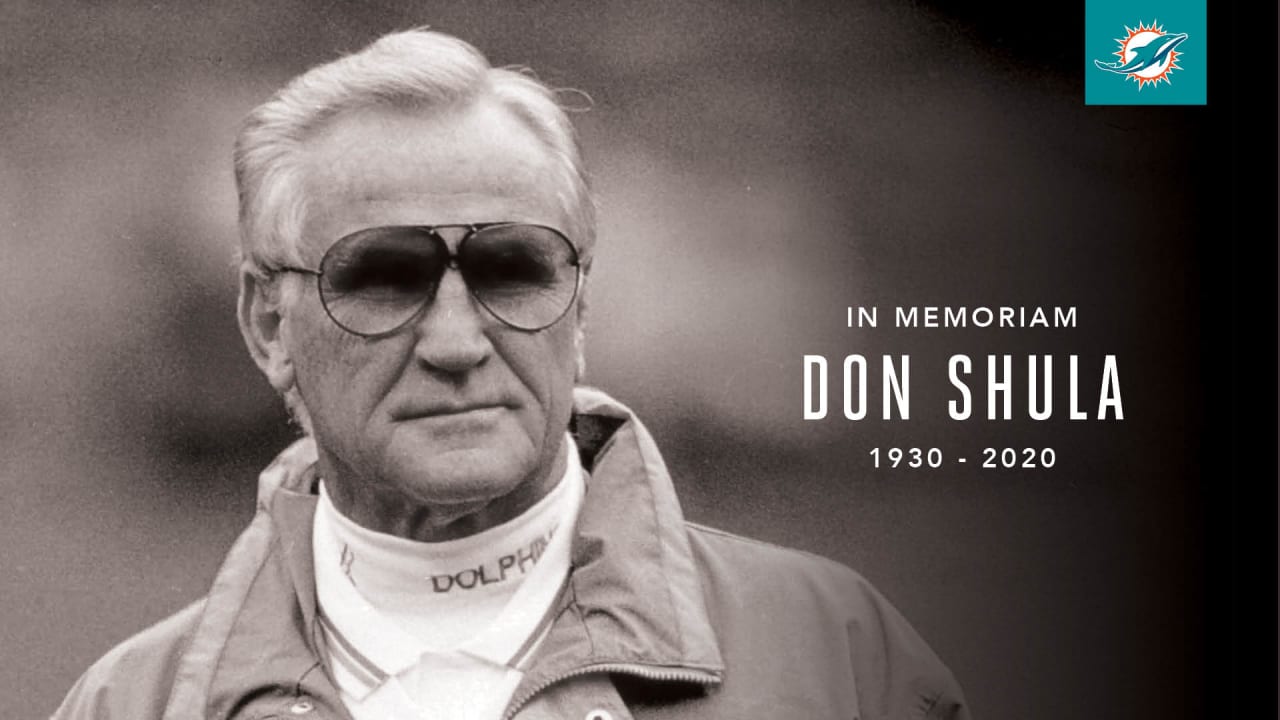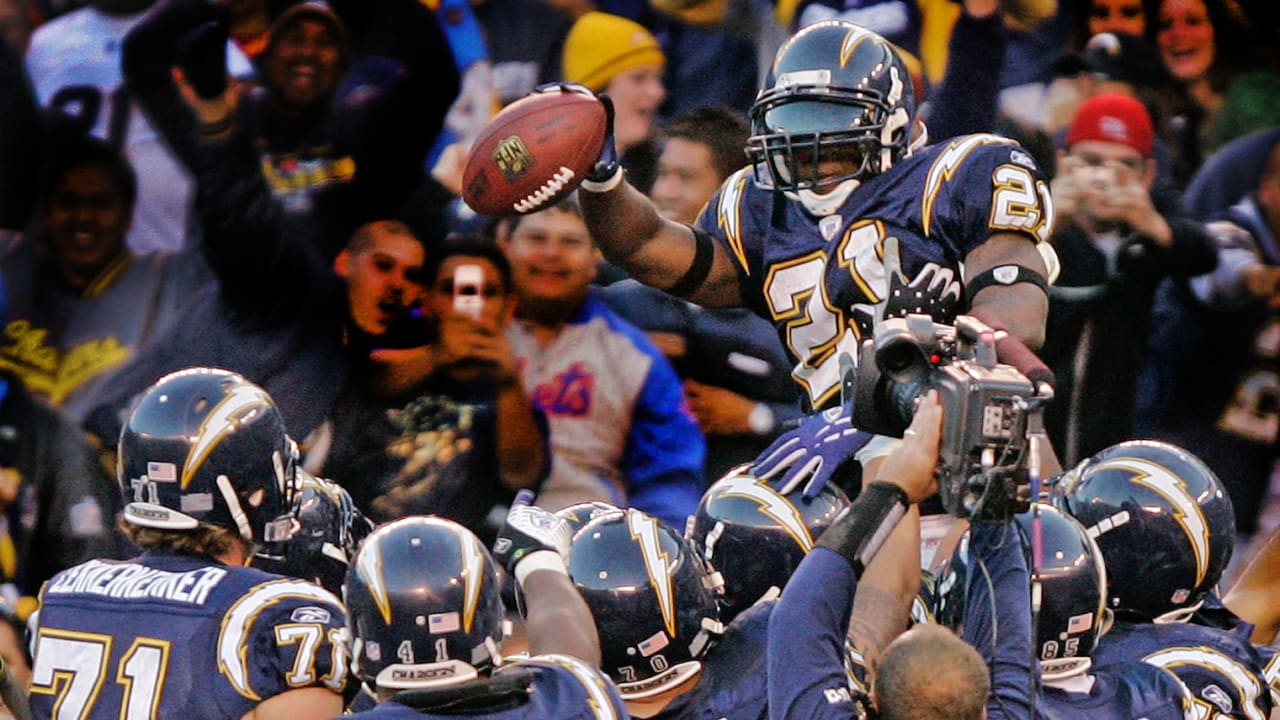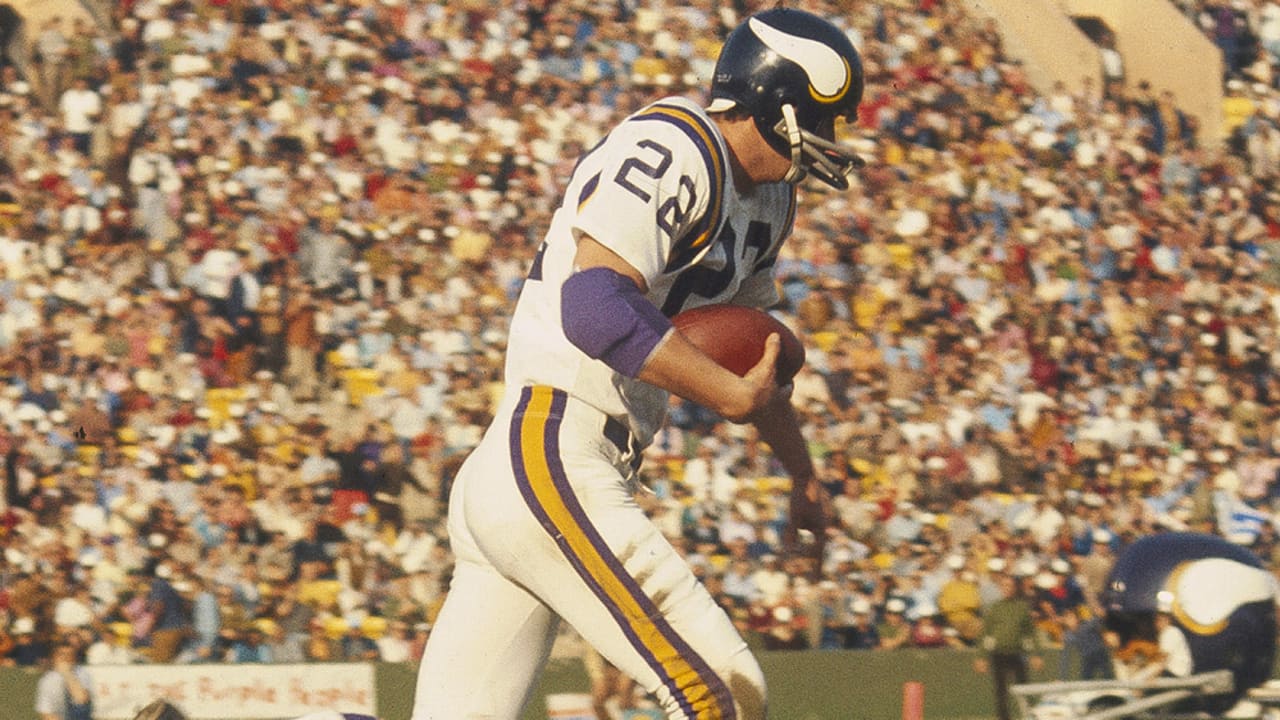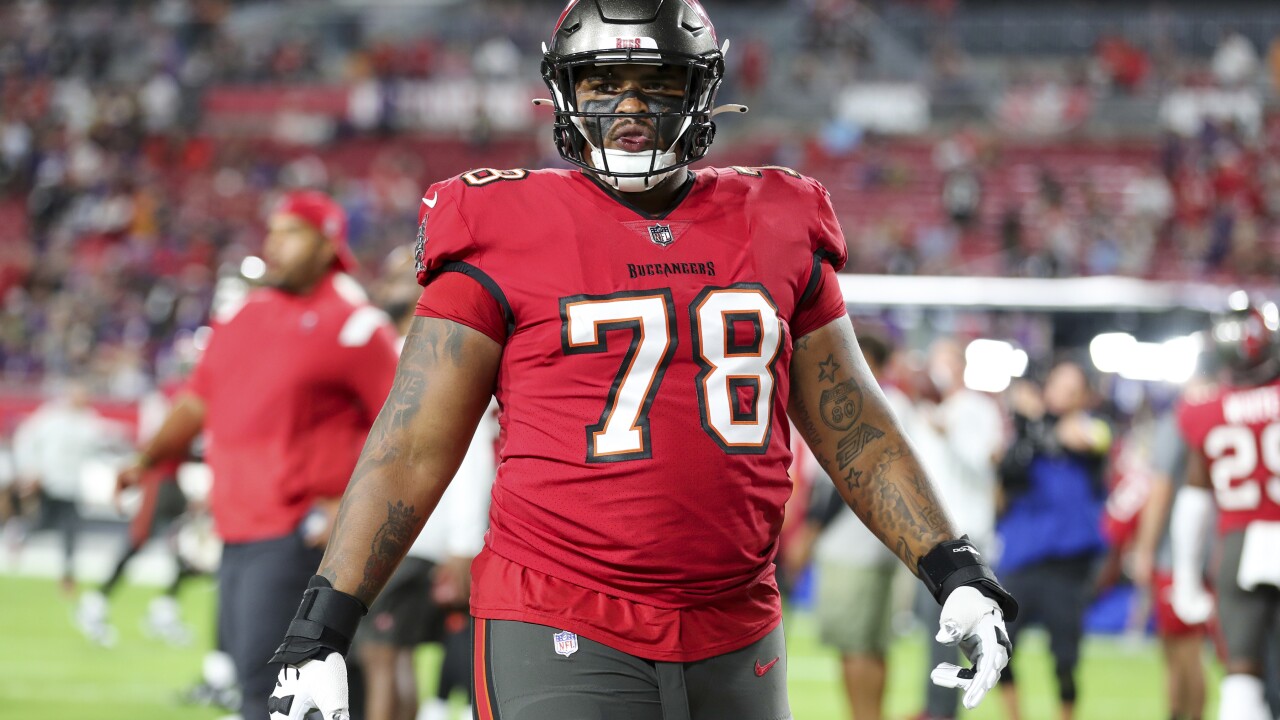The NFL is a league where each season’s relentless pursuit of greatness carves out unforgettable stories. Records symbolize not only dominance and exceptional skill but also the unique journey of players and teams that have etched their names in football lore. The game’s history has seen extraordinary feats that transcend generations, appearing almost untouchable due to their magnitude and the evolving nature of the sport.
Whether it’s a quarterback leading his team to championship glory or a defensive back showcasing remarkable playmaking ability, these records offer windows into moments of brilliance. The top 10 most unbreakable records in NFL history present challenges that will likely remain insurmountable due to the changing structure of the league, the unparalleled skill of the record-holders, or the specific circumstances that enabled their accomplishments.
From the longevity and dominance of Jerry Rice to the infamous losing streak of the Tampa Bay Buccaneers, these milestones remind us how special these achievements are and the lasting legacies they’ve built. They encapsulate the essence of NFL history, showcasing the highs and lows that have defined the sport over the decades.

In a league as competitive and unpredictable as the NFL, setting records is a remarkable feat. Yet, some players and teams have managed to etch their names into history books with accomplishments so monumental that they seem almost impossible to surpass. From dominant individual performances to unprecedented winning streaks (or losing streaks), these records capture the essence of football’s legendary figures and unparalleled moments. This list explores the top 10 most unbreakable records in NFL history, where sheer skill, incredible consistency, and sometimes a bit of luck have secured their legacy for generations to come.
Here are the Top 10 Unbreakable Records in NFL History
1. Jerry Rice’s Career Receiving Yards
Jerry Rice’s record of 22,895 receiving yards seems untouchable for any wide receiver to break. Rice’s career was a perfect storm of talent, discipline, and ideal circumstances that allowed him to dominate over 20 seasons in the NFL. Drafted in 1985 by the San Francisco 49ers out of Mississippi Valley State, he quickly became the team’s primary target in the West Coast offense.

Rice’s success stemmed from his tireless work ethic and obsession with perfection. His precise route-running, sure hands, and ability to adjust to passes made him a matchup nightmare. Quarterbacks Joe Montana and Steve Young formed a perfect partnership with Rice, creating one of the most successful offensive trios in league history. They thrived in Bill Walsh’s West Coast offense, designed to use short, accurate passes to control the field and exploit defenses. Rice’s reliability and knack for finding soft spots in coverage allowed him to lead the league in receiving yards six times.
The 1995 season was one of his standout performances, in which he amassed 1,848 yards and 15 touchdowns. He demonstrated exceptional longevity, continuing to perform at a high level well into his late 30s. Even at 40, Rice was a regular contributor, catching 92 passes for 1,211 yards for the Oakland Raiders.
What makes this record so remarkable is the disparity between Rice and the next closest receivers. Larry Fitzgerald is second with 17,492 yards but was still over 5,400 yards behind Rice. The nature of today’s NFL makes it highly improbable for another receiver to replicate Rice’s longevity and productivity. Players frequently change teams or retire earlier, and the shift toward passing by committee reduces the opportunities for a single receiver to dominate. Rice’s record remains a tribute to his unmatched greatness.
2. Emmitt Smith’s Career Rushing Yards
Emmitt Smith’s record of 18,355 rushing yards may well stand forever. Drafted in 1990 by the Dallas Cowboys, Smith became the NFL’s all-time leading rusher by showcasing his exceptional durability and versatility. He remained the cornerstone of a dominant Cowboys offense that won three Super Bowls in the 1990s, setting a standard for workhorse running backs.

Smith relentlessly pursued extra yards, using his low center of gravity, vision, and footwork to evade defenders. He ran behind a stellar offensive line, including Hall of Famers like Larry Allen and Erik Williams, which provided him ample opportunities to find holes. Smith rushed for over 1,000 yards in each of his first 11 seasons and topped 1,700 yards in 1995. His career longevity was notable; Smith played for 15 seasons, the last two with the Arizona Cardinals.
His incredible production and consistency earned him the record after surpassing Walter Payton’s mark of 16,726 yards. Modern NFL running backs face significant challenges in trying to break this record. The league has shifted towards more pass-oriented offenses, and teams often employ multiple running backs to preserve their health. With shorter careers due to injuries and wear and tear, it’s unlikely any back will approach Smith’s tally. Even the greatest current running backs, like Derrick Henry, are unlikely to have the consistent production and longevity required to reach such a milestone.
3. Don Shula’s Career Wins
Don Shula’s legacy is defined by his 347 career wins as a head coach, the most in NFL history. Shula’s illustrious career spanned 33 seasons with the Baltimore Colts and Miami Dolphins, where his adaptability, strategic acumen, and leadership set him apart.
Shula’s tenure began in 1963 with the Colts, where he quickly became the youngest head coach in NFL history at age 33. His Colts teams made regular postseason appearances, including a trip to Super Bowl III, but he made history after taking over the Miami Dolphins in 1970. With Miami, Shula orchestrated one of the greatest dynasties in sports. His 1972 Dolphins remain the only team in NFL history to complete a perfect season, winning all 17 games and capturing Super Bowl VII.

Shula’s adaptability enabled him to transition from a run-first offense led by Larry Csonka to a high-octane passing attack with Dan Marino. He holds the record for the most consecutive winning seasons (15) and set an NFL-best 21 playoff victories. His reputation for meticulous preparation and game planning made him a coaching icon.
Breaking Shula’s record seems improbable in today’s NFL, where head coaches face immense pressure to succeed immediately. High turnover rates mean few coaches will have the time to build the same kind of sustained success. Bill Belichick is the closest active coach, but even he would need several more seasons to reach Shula’s mark. Shula’s record embodies a bygone era where longevity and adaptability were keys to success.
4. Tom Brady’s Super Bowl Wins
Tom Brady’s seven Super Bowl wins set a standard that may remain unchallenged for generations. Drafted in the sixth round by the New England Patriots in 2000, Brady became the greatest quarterback in NFL history, earning his place through relentless competitiveness, preparation, and a remarkable ability to deliver under pressure.

Brady’s Super Bowl journey began in 2001 when he replaced an injured Drew Bledsoe, leading the Patriots to their first title in Super Bowl XXXVI. Over the next two decades, he guided the Patriots to five more championships while collecting countless postseason records. His precision passing, coolness under pressure, and unwavering confidence made him a perfect fit in Bill Belichick’s system. After leaving New England, he continued his winning ways, leading the Tampa Bay Buccaneers to their second Super Bowl win in 2020.
Brady holds numerous postseason records, including most touchdown passes and passing yards in Super Bowl history. His ability to perform at a high level into his mid-40s is remarkable, allowing him to transcend generations of NFL quarterbacks. Winning a Super Bowl requires skill and good fortune, and no other quarterback has been able to replicate Brady’s consistency and longevity.
While Patrick Mahomes and other younger quarterbacks are poised to achieve greatness, matching Brady’s record will be daunting. The competitive nature of the league, rising talent, and constant roster changes make reaching seven titles unlikely.
5. Brett Favre’s Consecutive Starts
Brett Favre’s consecutive starts streak of 297 games (321 including playoffs) epitomizes his toughness, passion, and resilience. Beginning in 1992 and ending in 2010, Favre played through injuries, tragedies, and slumps to deliver an unmatched streak of availability and dependability.

Favre became the Green Bay Packers starting quarterback in 1992 and remained a fixture in the lineup until his retirement. He endured a separated shoulder, sprained ankle, and broken thumb but never missed a start, earning a reputation as the NFL’s iron man. Favre played with an unrelenting intensity and love for the game, often overcoming pain to keep the streak alive. He displayed remarkable durability despite being sacked 525 times, the third-most in NFL history.
His streak finally ended in 2010 after suffering a shoulder injury with the Minnesota Vikings. Even after retiring, Favre’s record remains a point of pride and a testament to his toughness and dedication.
In today’s NFL, player health is prioritized to prevent long-term injuries, and quarterbacks often sit out games to recover from even minor issues. This emphasis on player safety, coupled with shorter careers and strategic roster management, makes it improbable that anyone will break Favre’s record.
6. LaDainian Tomlinson’s Single-Season Touchdowns
LaDainian Tomlinson’s 31-touchdown season in 2006 with the San Diego Chargers was a tour de force that showcased his all-around offensive prowess. Breaking Shaun Alexander’s record of 28 touchdowns from the previous year, Tomlinson raised the bar for scoring consistency and efficiency in a single season.

Tomlinson thrived as a versatile weapon in the Chargers’ offense under head coach Marty Schottenheimer. He rushed for 1,815 yards and 28 touchdowns while adding three receiving scores for good measure. His ability to break tackles, find seams, and contribute as a pass-catcher made him a nightmare for defenders. Tomlinson’s season was punctuated by a game against the Denver Broncos where he broke the single-season touchdown record with his 29th trip to the end zone.
The NFL’s modern trend toward passing-focused offenses and the usage of multiple running backs significantly reduces the chances of any single player replicating Tomlinson’s feat. Coaches now prefer to limit the workload of their primary running backs, prolonging their careers while reducing injury risks. Teams often utilize specialized backs for specific situations, which minimizes one player’s scoring chances.
Tomlinson’s 2006 performance stands as a testament to his relentless drive and athleticism, ensuring its place among the most memorable offensive seasons in NFL history.
7. Drew Brees’ Consecutive Games with a Touchdown Pass
Drew Brees’ record streak of 54 consecutive games with at least one touchdown pass highlights his pinpoint accuracy, consistency, and mastery of the quarterback position. The New Orleans Saints quarterback surpassed Johnny Unitas’ long-standing record of 47 games and redefined the modern passing game.
/cdn.vox-cdn.com/uploads/chorus_image/image/52139229/usa_today_9724970.0.jpeg)
From 2009 to 2012, Brees threw for over 14,000 yards and 121 touchdowns. His performance was integral to the Saints’ offensive success, as he consistently exploited defensive weaknesses with quick decision-making and precise throws. Sean Payton’s offense was tailor-made for Brees, who maximized his chemistry with receivers like Marques Colston and Jimmy Graham.
The streak finally ended against the Atlanta Falcons in 2012, but Brees had cemented his legacy as one of the greatest passers in NFL history. The modern emphasis on passing has allowed quarterbacks to put up big numbers, but few have displayed the consistency needed to maintain a streak of this magnitude. Injuries, defensive game-planning, and even adverse weather conditions can all disrupt such a streak.
Brees’ consecutive games record speaks to his incredible preparation, intelligence, and adaptability, and it’s a milestone unlikely to be surpassed.
8. Night Train Lane’s Single-Season Interceptions
In 1952, Dick “Night Train” Lane redefined defensive play with an astonishing 14 interceptions in a single season. Despite playing only 12 games that year, Lane capitalized on his ball-hawking instincts, aggressiveness, and athleticism to set a record that still stands today.

Lane was a defensive back ahead of his time. His unique ability to read opposing quarterbacks and bait them into risky throws made him a nightmare for offensive coordinators. He coupled this with a knack for physical tackling, earning him a reputation as one of the hardest-hitting defensive backs in the league.
While today’s NFL has shifted toward pass-heavy offenses, Lane’s record remains unchallenged due to various factors. Quarterbacks are more careful about turnovers and often target safer, high-percentage passes. The league’s rules have also changed to protect wide receivers, making it harder for defensive backs to physically dominate their opponents as Lane did.
Modern defensive backs might occasionally lead the league in interceptions. Still, it’s unlikely that anyone will reach Lane’s total in a single season due to offensive evolution and improved quarterback play.
9. Paul Krause’s Career Interceptions
Paul Krause’s 81 career interceptions set a standard that no defensive back has been able to match. Playing for the Washington Redskins and Minnesota Vikings from 1964 to 1979, Krause became a master of reading quarterbacks and baiting them into risky throws.

Known for his incredible vision and anticipation, Krause often seemed to know where the ball was going before the quarterback did. He intercepted 12 passes in his rookie season and went on to lead the league again in 1975. Krause had seven seasons with at least seven interceptions and finished his career as the NFL’s all-time leader.
Krause’s interception record has stood the test of time due to the league’s changing nature. The modern emphasis on protecting the ball, combined with advanced offensive schemes and analytics, has made quarterbacks more risk-averse. Defensive schemes have also evolved, requiring defensive backs to focus on coverage responsibilities rather than solely hunting interceptions.
Krause’s record remains a testament to his exceptional ability and consistency in an era when defenses could afford to be more aggressive. Breaking his career total seems improbable given today’s more cautious passing strategies.
10. Tampa Bay Buccaneers’ Losing Streak
The Tampa Bay Buccaneers’ record-setting 26-game losing streak remains an unfortunate reminder of the challenges expansion teams face. The Buccaneers joined the NFL as an expansion team in 1976 and lost all 14 games in their debut season. They extended the streak to 26 before finally winning a game against the New Orleans Saints in the 13th game of their second season.

The Buccaneers were at a severe disadvantage, fielding a roster of untested rookies and players discarded by other teams. Their offensive line struggled to protect the quarterback, while their defense couldn’t keep opponents out of the end zone. Head coach John McKay endured widespread criticism, but the team persevered and ultimately found a way to end their streak.
The NFL has since implemented measures to ensure expansion teams have access to higher-quality players, reducing the chances of another prolonged losing streak. The implementation of free agency and draft rules has helped new teams be more competitive early on. Moreover, today’s salary cap ensures that even struggling franchises can improve with prudent financial management.
While no team wants this dubious record, the Buccaneers’ streak serves as a historical footnote to the challenges of building a franchise from scratch.
These unbreakable records, from Jerry Rice’s 22,895 receiving yards to Brett Favre’s 297 consecutive starts, are not just numbers; they are milestones of dedication, consistency, and mastery that stand as a testament to the individuals’ relentless pursuit of greatness.
They also offer a lens through which we can view the historical evolution of the NFL. Modern greats like Patrick Mahomes and Derrick Henry are carving their paths and setting new standards, yet the challenge of eclipsing these venerable records remains daunting. Changes in team strategies, player health considerations, and the structural evolution of the league itself all play significant roles in making these records seem nearly impossible to break.

complexity of these records is deepened by the varied factors that influence modern NFL careers. The rise of offensive versatility, such as spread offenses and committee approaches in the backfield, diminishes the likelihood of single players dominating certain statistical categories. Additionally, the heightened focus on player safety, the strategic management of player workloads, and the sophisticated defensive schemes of today’s game create barriers to achieving the sort of singular, record-setting performances seen in past eras.
Ultimately, these records do more than recount remarkable feats; they inspire future generations of players to strive for new heights and challenge the limits of what is possible. Whether it’s the coaching prowess of Don Shula or the defensive acumen of Paul Krause, these records are enduring reminders of the triumphs and trials that have shaped the NFL.
They are not merely markers of past achievements but beacons that illuminate the path for tomorrow’s athletes who seek to leave their indelible marks on the rich tapestry of NFL history. As the league evolves, these records will stand as high watermarks of ambition and achievement—testaments to what has been accomplished and challenges to what might yet be achieved.









